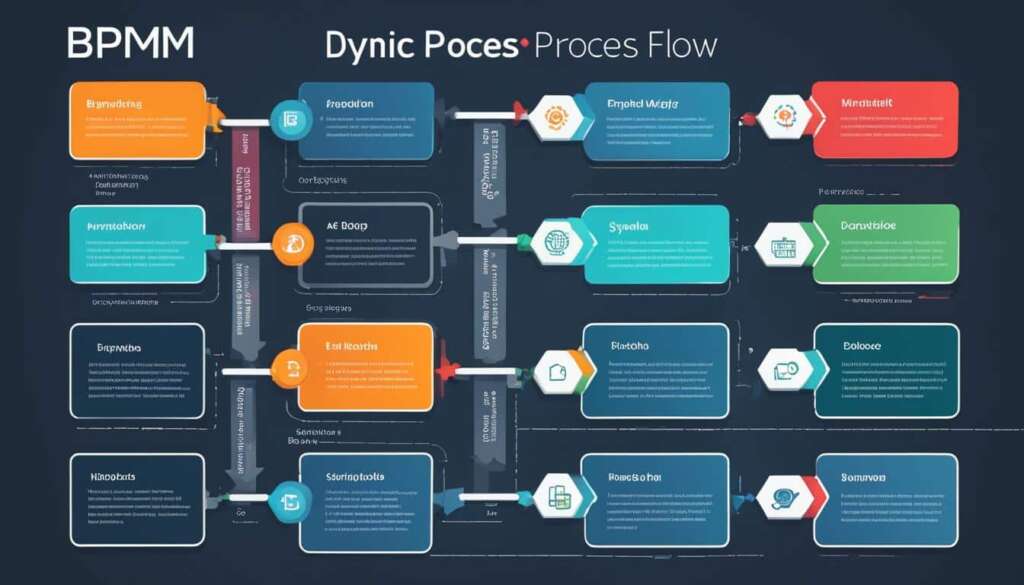Table of Contents
In today’s volatile business landscape, organizations are constantly striving to improve their processes to stay competitive and drive business value. This is where Business Process Management (BPM) comes into play. BPM is a structured approach to analyzing, modeling, implementing changes, and continuously improving business processes to improve efficiency and streamline workflow.
With BPM, organizations can identify bottlenecks and inefficiencies in their processes, making it easier to optimize and automate them for enhanced productivity and effectiveness. By embracing BPM, companies can improve their operational efficiency, reduce costs, and ultimately deliver better products and services to their customers.
Furthermore, BPM incorporates various optimization methodologies such as Agile, Six Sigma, and lean management, allowing organizations to adopt a holistic approach to process improvement. These methodologies provide frameworks and strategies for organizations to achieve continuous improvement and adapt to changing business needs.
BPM is not limited to just internal processes; it also extends to customer-facing processes. In today’s digital business landscape, organizations must focus on providing exceptional customer experiences. By leveraging BPM, organizations can optimize customer-centric processes, ensuring seamless interactions and increased customer satisfaction.
Ultimately, BPM enables organizations to drive business value and achieve their strategic objectives by improving their processes and fostering a culture of continuous improvement and agility.
The Importance of Business Process Management
Effective business processes are crucial for enterprise success, as they play a vital role in achieving business goals. Business process management (BPM) ensures that processes are efficient, effective, and aligned with strategic objectives.
BPM helps organizations eliminate waste, reduce costs, improve compliance, increase agility, and support digital transformation. By optimizing and streamlining processes, companies can deliver better products and services, improve customer satisfaction, and achieve operational efficiency.
BPM provides continuous process improvement and adaptation to changing business needs, ensuring that companies stay ahead in a rapidly evolving business landscape. Let’s take a closer look at how BPM impacts various aspects of an organization’s success:
Operational Efficiency
BPM enables organizations to identify bottlenecks, inefficiencies, and redundancies in their processes. By mapping out and analyzing every step, companies can eliminate unnecessary tasks, automate repetitive processes, and improve overall efficiency. This leads to reduced lead times, faster response to customer demands, and increased productivity.
Cost Reduction
Streamlining and optimizing business processes through BPM can help companies significantly reduce costs. By eliminating waste, reducing manual interventions, and automating workflows, organizations can achieve cost savings, improve resource allocation, and eliminate costly errors or rework. BPM also enables better utilization of resources and helps in identifying cost-saving opportunities.
Compliance and Risk Management
BPM plays a critical role in ensuring compliance with regulations and industry standards. By standardizing processes, enforcing policies and procedures, and tracking and auditing activities, organizations improve compliance and minimize the risk of non-compliance. BPM provides transparency, accountability, and traceability, which are essential for regulatory compliance.
Agility and Innovation
In today’s rapidly changing business landscape, organizations need to be agile and adaptable. BPM enables companies to respond quickly to market demands, customer feedback, and changing business requirements. By providing a structured framework for process improvement, BPM fosters innovation, encourages experimentation, and enables continuous adaptation.
Digital Transformation
Digital transformation is a key driver of business success in the modern era. BPM helps organizations embrace digital tools and technologies to automate processes, enhance collaboration, and improve customer experiences. BPM enables organizations to leverage data analytics, artificial intelligence, and machine learning to gain actionable insights and make data-driven decisions.
Customer Satisfaction
Effective business processes directly impact customer satisfaction. By aligning processes with customer needs, organizations can deliver products and services that meet or exceed customer expectations. BPM enables organizations to identify and remove customer pain points, streamline customer-facing processes, and enhance the overall customer experience.
As businesses strive for success and growth, embracing business process management becomes essential. BPM enables organizations to continuously improve their processes, drive operational excellence, and achieve their strategic goals. By reducing costs, improving efficiency, increasing agility, and delivering better customer experiences, BPM sets the foundation for business success in a digital age.
Types of Business Process Management
Business process management (BPM) encompasses various types that focus on optimizing different aspects of organizational processes. Each type aims to drive efficiency, effectiveness, and collaboration across different domains of business operations.
One type of BPM is human-centric BPM, which prioritizes the optimization of processes involving significant human interactions. By enhancing collaboration, empowering employees, and simplifying and standardizing processes, human-centric BPM enables organizations to unlock their full potential.
Another type is document-centric BPM, which focuses on improving document-based processes. By digitizing and automating document management, document-centric BPM enhances accessibility, reduces processing time, and streamlines workflows, leading to improved efficiency and productivity.
Lastly, integration-centric BPM addresses the challenge of integrating disparate systems and applications within an organization. By establishing seamless data exchange, eliminating data silos, and improving information flow, integration-centric BPM enhances collaboration and enables organizations to make data-driven decisions.
FAQ
What is BPM?
Business process management (BPM) is a structured approach to improving business processes in order to drive desired business outcomes and results.
How does BPM work?
BPM involves analyzing, modeling, implementing changes, monitoring, and continuously improving processes to streamline workflow, boost efficiency, and drive business value.
What optimization methodologies are incorporated into BPM?
BPM incorporates various optimization methodologies, such as Six Sigma, lean management, and Agile.
How does BPM support digital business?
BPM now encompasses both back-end and customer-facing processes, as digital business has become a focus.
How can BPM benefit an organization?
BPM helps organizations eliminate waste, reduce costs, improve compliance, increase agility, and support digital transformation.
What is the importance of effective business processes?
Effective business processes play a vital role in achieving business goals and ensuring operational excellence.
What are the different types of BPM?
BPM can be categorized into human-centric BPM, document-centric BPM, and integration-centric BPM.












